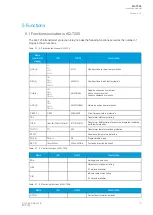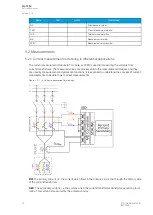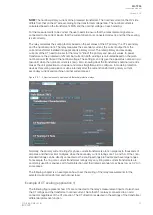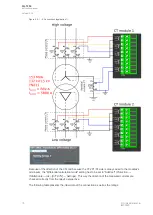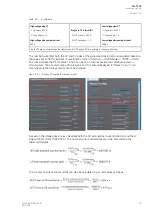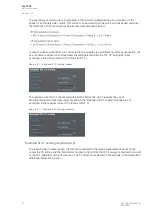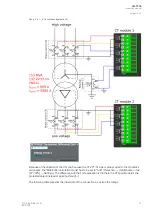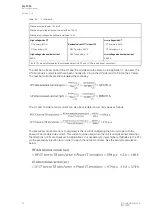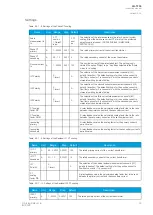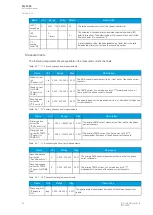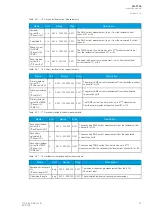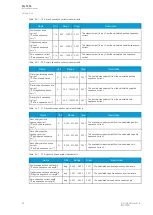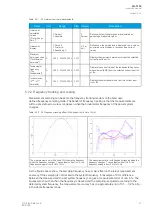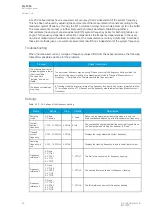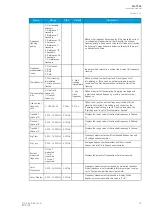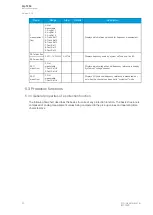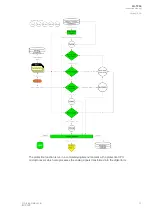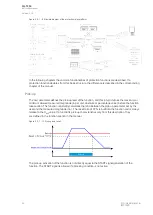
NOM:
NOM: The nominal primary current of the protected transformer. The nominal current on the HV side
differs from that on the LV side according to the transformer voltage ratio. The nominal current is
calculated based on the transformer's MVA and the nominal voltage on each winding.
For the measurements to be correct the user needs to ensure that the measurement signals are
connected to the correct inputs, that the current direction is connected correctly, and that the scaling
is set correctly.
The relay calculates the scaling factors based on the set values of the CT primary, the CT secondary
and the nominal current. The relay measures the secondary current, the current output from the
current transformer installed into application's primary circuit. The rated primary and secondary
currents of the CT need to be set for the relay to "know" the primary and per-unit values. In power
transformers, the protected unit's nominal current in both windings is calculated based on the given
nominal power (MVA) and the nominal voltage. The settings can only give the apparatus nominal in p.u.
(per-unit) when the nominal current is known. Also, knowing what the transformer's nominal current is
makes the unit protection much easier and more straightforward to configure. In modern protection
devices this scaling calculation is done internally after the current transformer's primary current,
secondary current and machine nominal current are set.
Figure. 5.2.1 - 3. Nominal current calculation in differential protection relays.
Normally, the primary current ratings for phase current transformers are ten amperes to thousands of
amperes and their decimal multiples, while the secondary current ratings are 1 A and 5 A. Other, non-
standard ratings can be directly connected as the scaling settings are flexible and have large ranges.
For example, the ring core current transformer ratings may vary. Ring core current transformers are
commonly used for sensitive earth fault protection and their rated secondary may be as low as 0.2 A in
some cases.
The following chapter is an example on how to set the scaling of the relay measurements for the
selected current transformer and nominal load.
Example of CT scaling (application 1)
The following figure presents how CTs are connected to the relay's measurement inputs. It also shows
the CT ratings and the transformer nominal current. Note that S1 is always connected to an odd
connector regardless of the CT direction. The CT direction is selected in the settings of the transformer
differential protection function.
A
AQ
Q-T256
-T256
Instruction manual
Version: 2.06
© Arcteq Relays Ltd
IM00028
17
Summary of Contents for AQ-T256
Page 1: ...AQ T256 Transformer protection IED Instruction manual...
Page 2: ......













